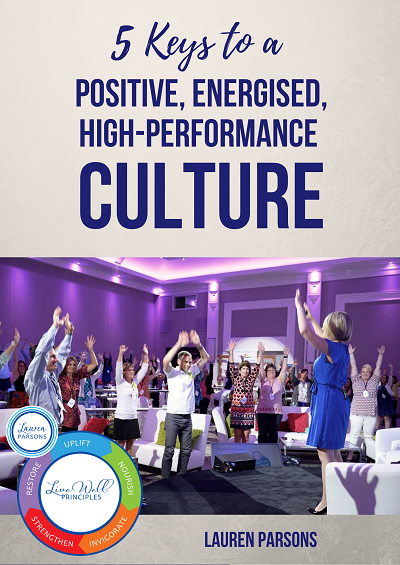How to Maintain a Close-Knit Team While Working Remotely
As we grapple with the new dynamics of a distributed workforce – where some team members work from remotely from home while others are in the office – one of the biggest challenges emerging is how to maintain strong communication and a close-knit team.
While days may seem filled with endless meetings, I’m hearing more and more staff saying they feel disconnected and out of the loop, lonely and isolated. Now more than ever we need to set up systems to be able to maintain a strong, connected and engaged workforce.
It’s more difficult to know how your staff are really doing when you don’t have the opportunity to connect in person and even via video it can be a challenge.
A sure-fire way to maintain a close-knit team
One effective solution is to introduce structured ‘connection meetings’. These are non-work focused meetings that don’t discuss work in progress, KPIs or actionable outcomes.
Now before you switch off – hear me out.
We know that teams that are highly connected and where there is a high level of trust, have less conflict, better communication, higher staff satisfaction and improved engagement, all of which leads to lower staff turnover and higher productivity.

With effective communication becoming increasingly important, let’s look at four different types of meetings:
1. Decision making meetings
These need to have a clear agenda with timeframes for each section, set expectations of how they will run. They allow for discussion, creativity and sharing of ideas. It’s vital to record outcomes and action points with names, dates and clear responsibilities and have a built-in follow-up mechanism to ensure these are followed through.
2. Information sharing meetings
Also known as ‘non-meetings’ in many cases. If the purpose of a meeting is simply to share information, then it’s important to question whether it’s the best medium. Could a written summary serve the purpose and save everyone time? It may be worth having an information sharing meeting for certain complex or contentious subjects but otherwise consider your alternatives.
3. ‘Scrum’ or ‘Frog’ meetings
A scrum in rugby occurs for a set purpose and gets everyone contributing energy for a short focused period in order to move forward in the same direction. Scrum meetings follow the same idea – short, sharp and to the point. Similarly ‘frog’ meetings are used to focus in on top priorities. They provide a chance to check in with each person briefly to hear what their ‘frog’ is – their most important task for the day (as per Brian Tracey’s book Eat That Frog.) These can be done standing and may take 2-10 minutes depending on the number of people involved.
4. Social connection meetings
These are vital to ensure staff stay connected as a team. They can be informal such a connecting to do the daily newspaper quiz, creating a virtual water cooler or having after work ‘virtual dinks.’ To really foster a close-knit team however, having structured connection meetings, such as what Simon Sinek’s team call ‘huddles’, are a powerful way to create an opportunity for growth, learning and building understanding of one another. You can include education or inspiration into these meetings as well as a chance for everyone to contribute.

How to run a fantastic ‘connection meeting’
Connection meetings can be done equally well in person as online, or a combination of both. They work extremely well via zoom or similar video conferencing software, where everyone can see/hear one another.
To be successful you need to make these meetings a priority. Ensure that your senior leadership team are fully supportive and setting the example and encouraging all staff to take part and create a high-trust environment where people can share how they’re really doing.
By having several roles delegated out among the team it keeps these meetings varied and boosts engagement rather than them always being led by the same person throughout.
Here’s a practical guide to running a structured connection meeting:
- Set the scene and create energy – have one person start the session with an activity such as an active game, waiata (song) or some sort of brain gym exercise get to everyone energised.
- Get present – have a second person lead everyone through a breathing technique, or mindfulness practise for 1-2 minutes to ensure everyone is present and focused.
- Share positives – open the floor for everyone to share ‘high fives’, providing specific praise to someone else in the team. People always do more of what they are praised for, so this simple practise of highlighting the positives and providing recognition will have a dramatic effect on your team performance, and will strengthen relationships.
- Share – Have another person facilitate, asking each team member to share on a specific topic (e.g. what’s been the highlight of your week? What were your highs/lows this week? What have you read lately that inspired you? What’s one thing you know that you wish others knew? What’s one thing some people here don’t know about you?) Pick a question of the day wisely and watch what unfolds. Have a timer with a pre-arranged signal to indicate when each person’s time is up (e.g. 2-3 minutes.)
- Check in – once everyone’s had a turn to speak, invite everyone to share one word to describe how they’re feeling now and one thing they’re looking forward to today (this can be typed into the chat for example) or if time allows you could go around verbally again.
- Close on a positive – have a different person wrap up with an inspirational quote, a joke or a story to finish on a positive note.
- Finish on a high – finish by taking a deep breath in and all stretching your arms up into a wide V or adopting a ‘power pose’ that you like (see Amy Cuddy’s TED Talk for details.) Body posture directly affects how you feel so this will help everyone end the session on a high.
To initiate these connection meetings, pick two or three colleagues who you know will be supportive of the idea and great at getting others on board. Discuss how you will tweak and adapt the process above to specifically suit your organisational culture. Plan the timeframes you’ll stick to and be sure to assign a timer and explain how they will display the times up signal. Brainstorm great opening activities, a question of the day and a closing message together and how you will set the scene and establish ground rules.
Launch the idea explaining the benefits and creating a safe and positive environment where people are encouraged to share honestly. At the close of the first meeting nominate people to take on the roles of leading the next one and continue this process moving forward, creating a regular rhythm of connection meetings at intervals to suit your team.

…
Want some help introducing this practise or mastering your workplace communication?
Book a session for your staff to discover all the ins and out of mastering your communication to maintain a close-knit, high performing team even when working remotely to avoid conflict and misunderstandings and boost productivity and profits.
If you’d like to find out more about this or other training to help you and your team thrive, feel free to book a chat into my online calendar

What some help creating a Positive, Energised, High-Performance Culture in your workplace?
To get started with some practical steps to put in place to boost the health and wellbeing of your team, download a complimentary copy of my eBook 5 Keys to a Positive, Energised, High-Performance Culture.
Simply enter your details here so we can email it out to you.

It will equip you with checklists of tips and ideas you can implement straight away to help your team thrive.
Your thoughts?
I’d love to her what you thought of this article.
Please leave a comment below…
…
If you enjoyed this article, please share it so it can reach more busy people and help them improve their health and happiness. With thanks in advance.
Share this Post
